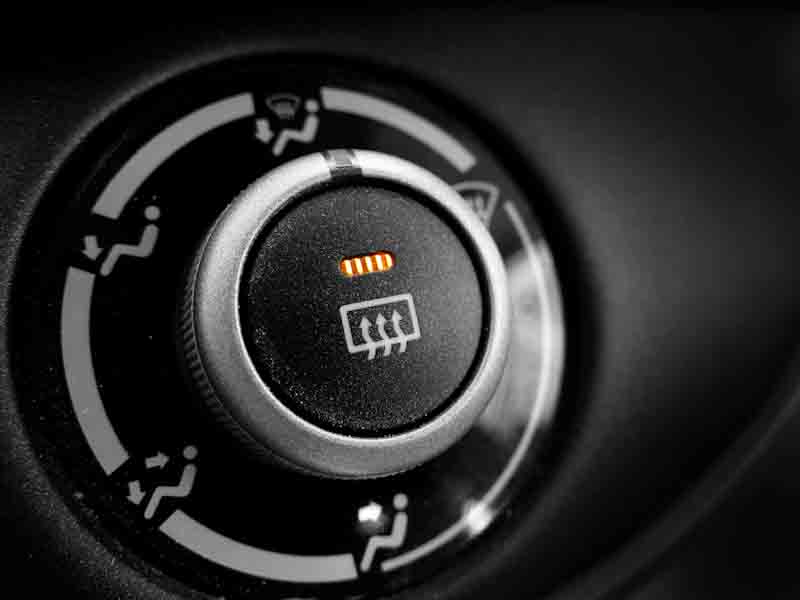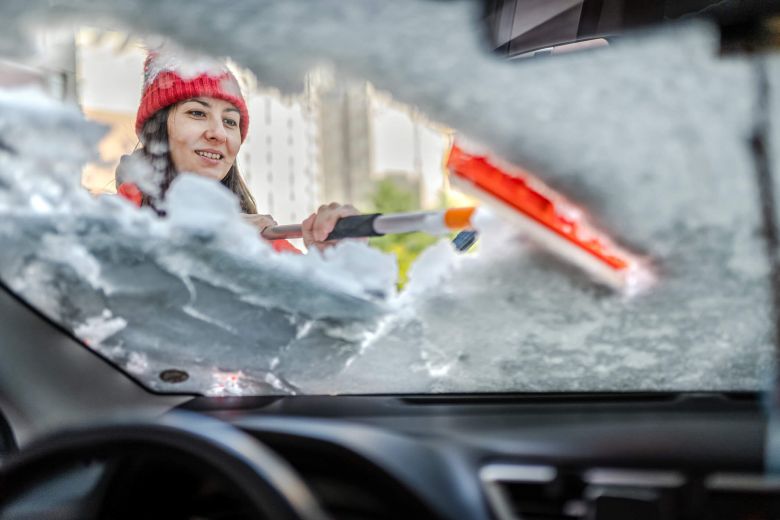With a bit of forward planning, you can de-ice your car quickly and safely. You can also take some steps to prevent the windscreen from freezing up in the first place, saving you valuable time on those frosty mornings.
We've put a complete guide together to help you de-ice your car in double quick time.
Items you'll need to de-ice your car
Before you get started, you will need a few helpful items to clear the ice from your vehicle.
You’ll likely be de-icing your car first thing in the morning before you head to work – so make sure you have warm clothing, including gloves.
The first items to have to hand is your car keys, along with an ice scraper.
Other items you may want to have available are a large water container and specific aerosols or liquids to help melt the ice.
There are many winter driving accessories that can help you be best prepared for the colder weather.
Ten items you'll need to de-ice your car:
- Your car keys
- Ice scraper
- Brush
- Large water container
- De-ice spray
- Gloves and warm clothes
- Torch (for early mornings/late nights)
- Windscreen and wingmirror covers
- Car cover
- If your windscreen has frozen on the inside - check out these tips
It is important to avoid homemade or every day items to prevent ice from building up - or when it comes to removing ice. This is because it may end up damaging your vehicle.
As part of your winter preparation, it is important to have your winter breakdown kit ready.
Should I start the engine?
Yes, you should turn on your engine before starting to de-ice your vehicle. The vehicle will have many features that will help melt the ice and speed up the process to get you out on the road as soon as possible.
Winter driving comes with many challenges, but knowing what all the settings you have in your car mean is important to stay safe on the roads.
However, do not let your engine idle for too long as it can end up damaging your engine. Idling increases the amount of exhaust fumes and greenhouse gases in the air.
You can also get fined for leaving your car with the engine on in certain areas.
Defrost settings, fans and in-car features

After turning on your engine, you have some useful tools at your disposal to melt the ice.
The first is the defrost setting – which you can see in the image above. Although it might be found in different places on the vehicle, it will be within reach of the driver.
Push the button with that symbol.
You will also be able to turn on the fan and point it in the direction of the windscreen and/or passenger windows.
Drivers will need to melt the ice on both of these to see out the front, use the wing mirrors, and have a better field of vision.
There will also be a button that looks similar, which will melt the ice on the rear windscreen.
Other vehicles will also have the option of a heated windows. This will use very thin mesh wires within the windscreen, which are able to heat to a high temperature quickly to melt the ice.
Some cars will also have an option to do this on the rear windscreen and wing mirrors.
If possible, turn all of these settings to the highest temperature possible. This will melt the ice quicker – and they are designed to only reach a heat that won’t damage the glass.
Use an ice scraper
A perfect tool to keep in your vehicle during the winter months, an ice scraper can help remove ice quicker, while the internal heaters melt the ice from the other side.
These small, lightweight items remove the ice without scratching the glass or otherwise damaging them.
Make sure you get a high-quality ice scraper, as poorly manufactured options can cause issues.
Household items such as dustpans and credit/debit cards have historically been used – but they are not good options.
Use water to melt ice on your windscreen
In the past, people used to boil water in the kettle and then throw it on the frozen car to quickly melt the car.
However, this is a very dangerous thing to do!
It will likely crack the glass – and even if it doesn’t, repeatedly doing it will weaken the glass.
Known as ‘thermal shock’, this is a bad habit to get into.
Although it may be the quick option – spending an extra minute will be worth not having a large bill to replace your windscreen.
However, using lukewarm water can be used in the absence of de-ice spray.
De-ice spray
Instead of using water – use one of the many de-ice aerosols available. During the winter months, these are readily available in many supermarkets and shops.
They are useful to keep in your vehicle and in your garage for when the temperature falls below zero degrees.
These concentrated formulas are able to quickly clear ice and snow without it refreezing.
If you get a high-quality spray, then it will not damage your vehicle’s paintwork, rubber, or plastics.
It can be used on all windows, windscreens, and lights.
Also, de-ice spray is effective even when the temperature hits its lowest of the season in the UK.
How to prevent your car’s windscreen from freezing this winter
One of the best tactics to use this winter is to try and prevent the build-up of ice overnight. Here are the two easiest ways of doing that.
However, if you have a garage or somewhere you can park away from the elements, then that will also help your car not freeze.
Car cover
This durable and fitted PVC cover will shelter your vehicle from the ice and mean that it can be easily removed before you head off on your car journey.
You will likely need to still turn on your air conditioning and windscreen heaters, but it will significantly reduce the time you spend removing ice from the windows.
When it isn’t in use, make sure to thoroughly clean it so that it doesn’t get mould stuck to it.
Windscreen and wing mirror covers
Similarly, these covers will also stop the build-up of ice on the glass parts of the vehicle – but will leave the rest of the vehicle exposed.
The windscreen is attached by hooking on the wing mirrors.
When you buy one, it will not include one for the rear window.
The wing mirror covers are applied like bags that go over the casing and are then tied shut.
Do you have any tips to help get ice off a vehicle? Or do you have any questions? Leave them in the comments below.

RAC sale – up to 33% off*
• Roadside cover from £5.29 a month†
• We get to most breakdowns in 60 mins or less
• Our patrols fix 4/5 breakdowns on the spot









